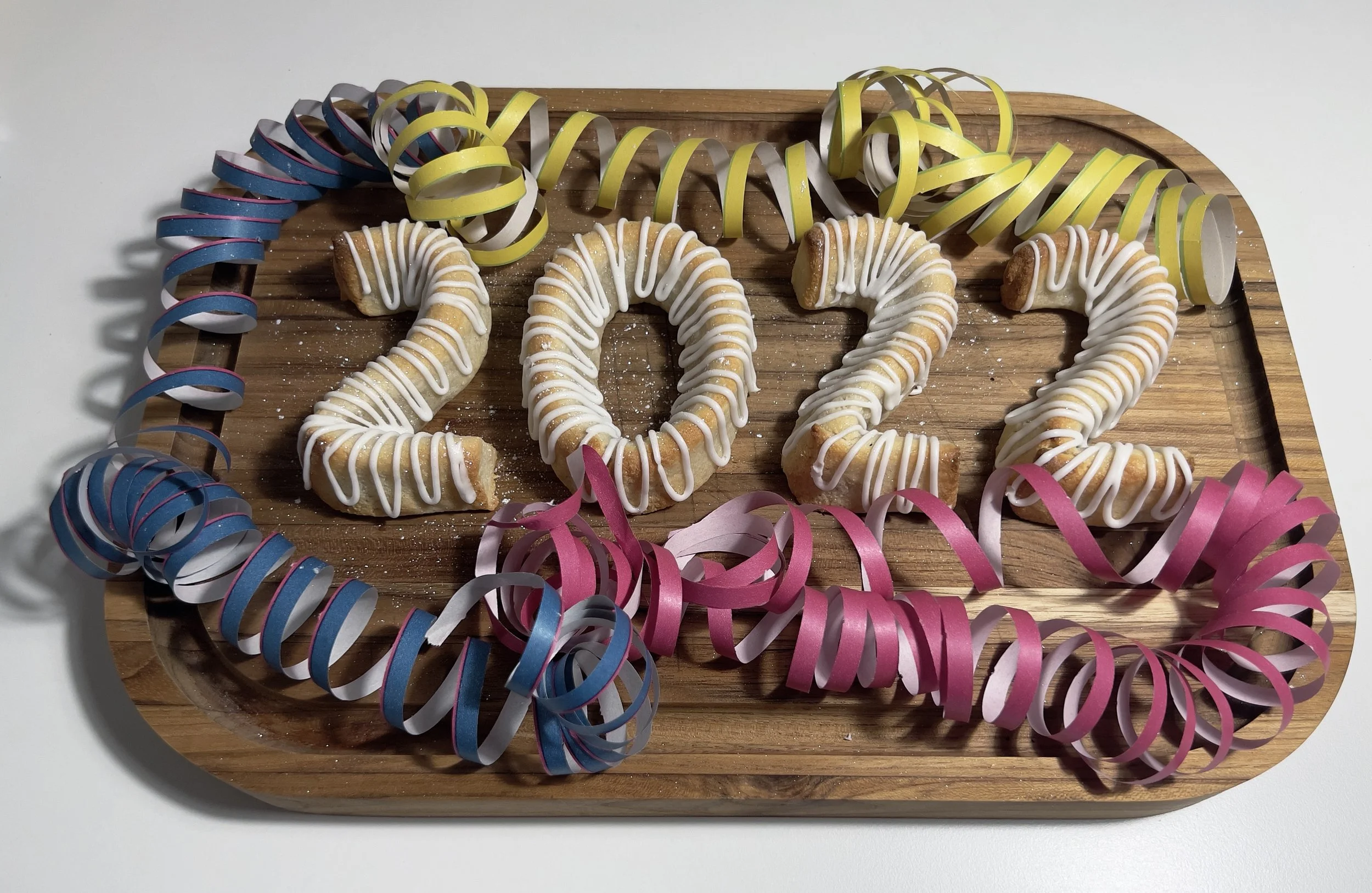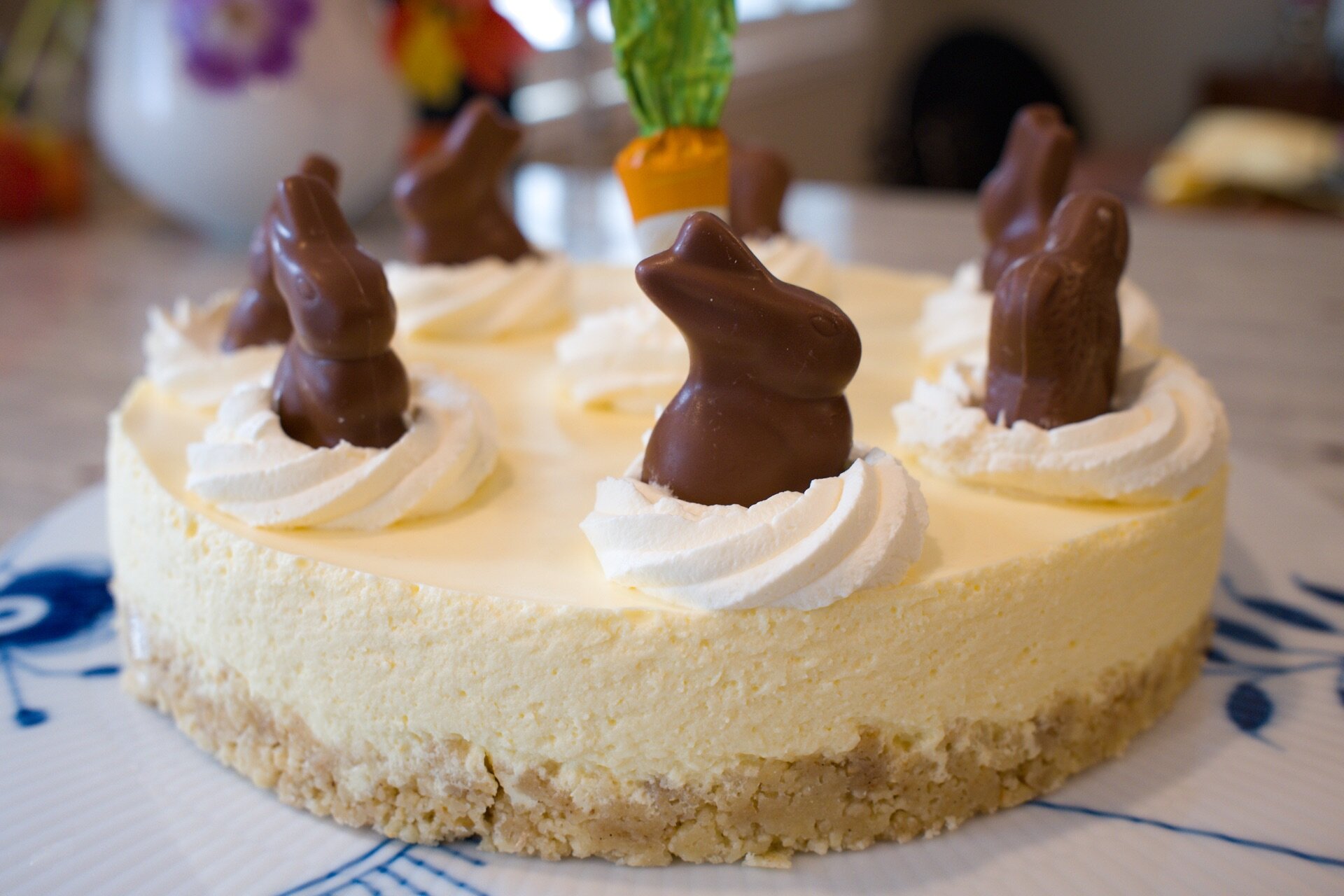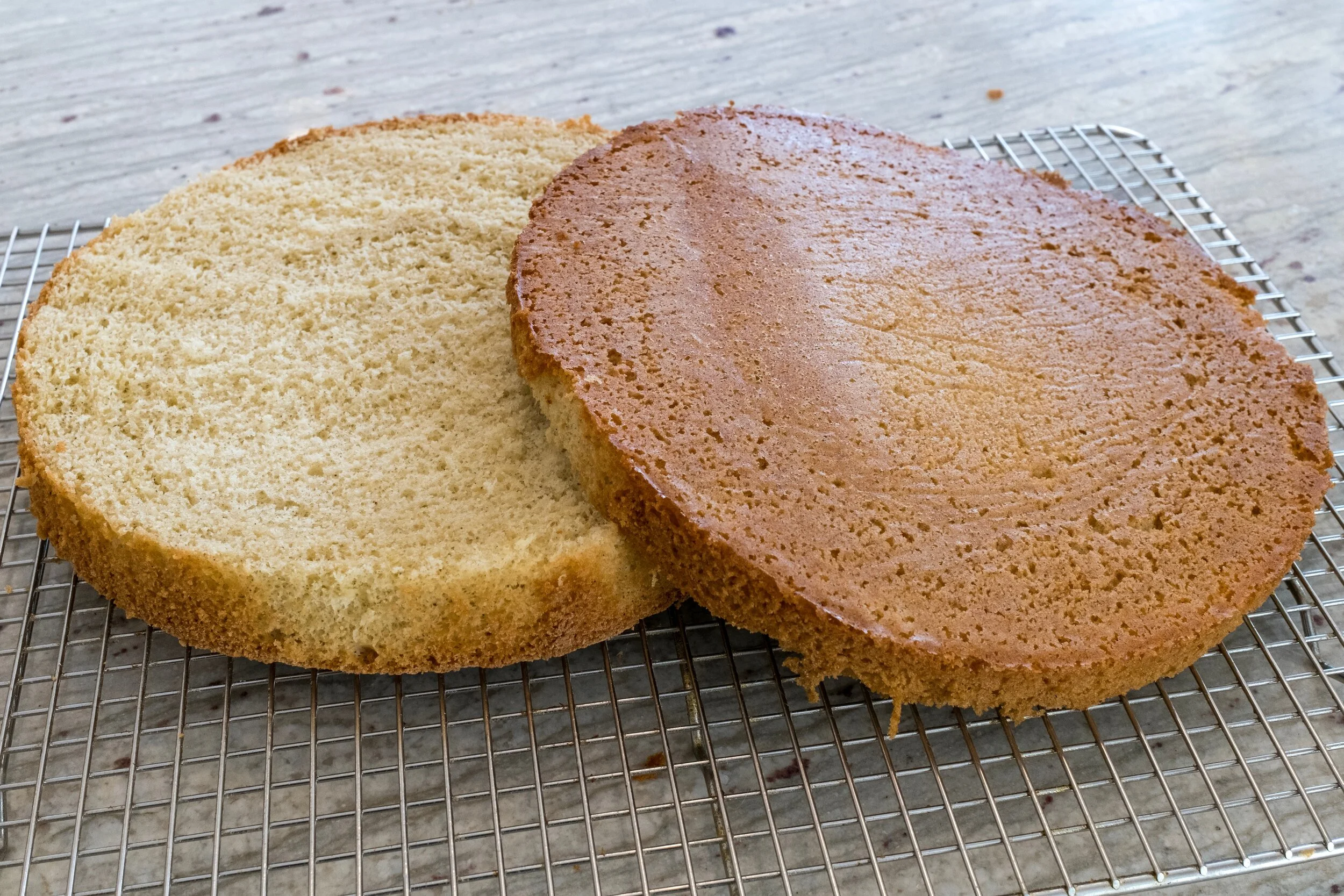I made pavlovas before but never with this finish. It was meant as a serving sized dessert, but to be honest, it came out as a dessert for sharing with your loved one.
I love the taste of the meringue with the lemon juice. The kind of pavlova I grew up with, "fuglereder" or birds nests in English, were plain white meringues, and they just tasted sweet, and served as a vessel for whipped cream and fresh berries or canned fruit if you were really unlucky.
I know 3 is a crowd on Valentines Day, but I like to make tree desserts just in case I'll fumble and break one of the meringues. I know this will happen if I don't have a spare.
Makes 3
Ingredients:
Meringue:
- 4 egg whites
- 120 g granulated sugar
- 55 g confectionary sugar
- 1 teaspoon lemon juice, fresh squeezed
- pink food coloring
Filling:
Directions:
Meringue:
Preheat oven to 185℉ (85℃). Line a baking sheet with parchment paper. Draw 6 3-inch (7.5 cm) circles about 2-inch (5 cm) apart on the parchment paper, and turn the parchment paper upside down, so you don't get any pencil on the pavlovas.
In the bowl for the stand mixer, beat egg whites until frothy. Add the sugar gradually, a couple tablespoons at a time, while still beating the egg whites. Whip the egg whites until stiff peaks. The egg whites/meringue will become thick and glossy. Gently fold in confectionary sugar and then fold in lemon juice and food coloring. Be careful not to over mix the meringue.
Spoon the meringue into a piping bag with a large round tip, and push the meringue down towards the tip.
Hold the piping bag at a 90-degree angle about an inch above the parchment paper, pointing at the center of the circle. Pipe with an even pressure until the meringue fills the circle. Ease the pressure on the piping bag and lift the piping bag straight up, making the meringue look like at big teardrop. Repeat for the rest of the circles.
Bake the meringues in the center of the oven for about 25 minutes, you should be able to gently remove the teardrops from the parchment paper. If you can't do this after baking for 25 minutes, then bake them for another 10 minutes. (This is when I knew my oven was broken. I had to bake the pavlova for about an hour before I could handle them)
With the flat bottom of the meringue facing up, spoon the inside out the inside, leaving a thin dome of meringue. Repeat with the rest of the meringues. Return the meringue domes to the baking sheet, and bake for another 30 minutes, flat side down. This will dry the meringues completely.
Let the meringues cool to room temperature.
Half of the domes (3) needs to be sanded down, using a microplane grater. This will become the base of the pavlovas.
Assemble:
Place the base of the pavlova, hollow side up on a plate. Pipe a big dollop white chocolate/lime ganache in the center filling the base. Place berries and quartered strawberries so they are covering the sides and top of the ganache. Pipe a small dollop ganache on top, to make the top dome stick.
Dust the top with confectionary sugar, and serve immediately.
TIPS:
For at quick dessert: Instead of making the teardrop, you can spread the meringue inside a drawn large circle on the parchment paper. Spread the meringue working from the center towards the edge. You want to make it look like a bowl. Bake it at 300℉ for 90 minutes. Fill the cooled bowl with ganache topped with fresh fruit.
Enjoy!
The Danish version:
Valentines Pavlova/Fuglereder
Ingredienser:
Marengs:
- 4 æggehvider
- 120 g sukker
- 55 g flormelis
- 1 tsk friskpresset citronsaft
- pink madfarve (jeg bruger wilton pastafarve)
Fyld:
Fremgangsmåde:
Opvarm ovnen til 85℃.
Tegn 6 cirkler med en diameter på 7,5 cm, ca 5 cm fra hinanden på et stykke bagepapir. Læg bageparpiret på en bageplade med tegningen ned mod pladen, så du ikke får blyant på dine kager. Læg på en bageplade.
Pisk æggehviderne let til de begynder at blive skummende. Tilsæt sukkeret et par spsk ad gangen, mens du pisker. Pisk æggehviderne til du kan vende skålen på hovedet uden at det løber ud. Marengsen er så tyk og blank. Fold forsigtigt den sigttede flormelis i massen. Når flormelisen er blandet i, vend farve og citronsaften i. Pas på med at over-mikse marengsen.
Kom marengsen i en sprøjtepose med en stor rund tylle i. Pres marengsen ned til spidsen, og pres eventuelle lufthuller ud.
Hold sprøjteposen i en 90 graderes vinkel ca 2 cm over bageparpiret. Pres marengsen ud, så den fylder cirklen ud, slip presset på sprøjteposen og løft den lige op, så marengsen ligner en stor dråbe. Gentag for resten af cirklerne.
Bag marengsne i 25-35 minutter indtil de er tørret lidt, så det er muligt for dig at løsne dem fra papiret, uden at ødelægge dem. Du skal have ca 1 cm tørret marengsskal. (Det var her min ovn for alvor stod af, da jeg var nød til at bage dem i næsten en time, før de var til at håndtere.)
Hold marengsdråben med den flade side opad, og skrab det inderste ud. Jeg skar en cirkel med en skarp kniv, så jeg fik en jævn kant. "Indmaden" er stadig en blød marengs. Sæt dråben tilbage på bagepladen og gentag med resten. Bag marengsdråberne med åbningen nedad i yderligere 30 minutter, indtil de er helt tørre.
Lad marengsdråberne køle helt af.
Haklvdelen af dråberne skal have toppen slebet af med et fint rivejern. Disse skal være bunden af fuglereden.
Samling:
Sæt bunden af fuglereden med hullet opad på tallerken. Sprøjt en stor klat hvid chokolade/lime ganache i, så den fylder skålen ud. Placer bær hele vejen rundt så det dækker ganachen. Kom lidt ekstra ganache på toppen, til at lime "låget" på. Gentag med de resterende fuglereder.
Lige før serveringen drysses med lidt flormelis.
TIPS:
For en hurtigere dessert, kan du forme marengsen som en stor skål og bage den i ca. 90 minutter ved 150℃. Fyld den kølede skål med ganache og frisk frugt.
Velbekomme!



















